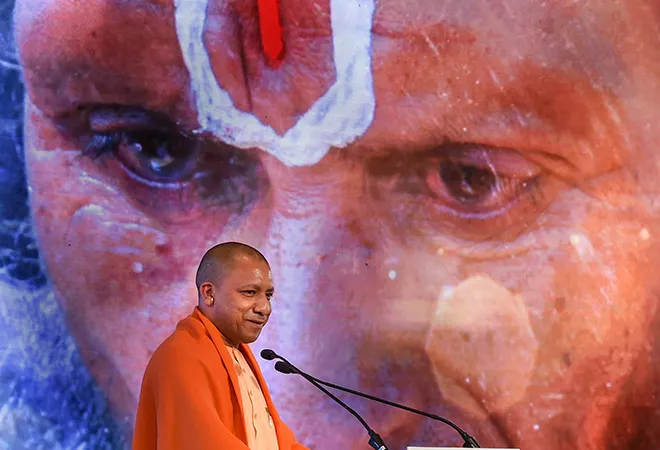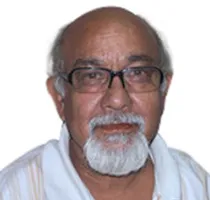-
CENTRES
Progammes & Centres
Location

Image Source: PTI
After the bad performance of the ruling BJP in the three Hindi heartland States in the recent Assembly elections, Uttar Pradesh, the biggest state of the Indian union, is once again turning to be crucial, especially for the BJP, in the 2019 general elections. The State is also very vital for the opposition parties that are attempting to put up a united fight against the BJP, led by popular Prime Minister Narendra Modi.
While the electoral picture for the emerging opposition alliance is getting increasingly clearer in majority of States, Uttar Pradesh that elects 80 MPs to the Lok Sabha remains trapped in a state of political confusion.
The BJP-led National Democratic Alliance (NDA) had won 73 seats in UP in the 2014 general elections but it lost three crucial by-elections in 2018. The ruling party candidates in Gorakhpur and Phulpur seats, vacated by State Chief Minister Yogi Aditya Nath and Deputy Chief Minister Keshav Prasad Maurya, were defeated by Samajwadi Party candidates who were backed and supported by the Bahujan Samaj Party (BSP) of four times State Chief Minister Mayawati. In another crucial by-election in Kairana, a seat in the western part of the State that is communally sensitive, the Rashtriya Lok Dal (RLD), supported by the SP, BSP and the Congress, trounced the BJP candidate. The joint candidate secured 51.49 percent votes while the BJP’s representative received 46.72 percent votes.
Gorakhpur, Phulpur and Kairana amply demonstrated that the BJP could be defeated if opposition united in the State. But since then, two most crucial players, the SP and the BSP -- have been keeping their cards close to the chest, sending mixed yet confusing signals.
There are three big political players in the state -- the BJP, BSP and SP -- while the Congress and the RLD are smaller political forces, but carry significant weight to make the opposition alliance invincible.
The emergence of the Pragatisheel Samajwadi Party Lohia (PSPL), formed by Shivpal Singh Yadav, the younger brother of Mulayam Singh Yadav, the three times Chief Minister and founder of the SP, is yet another factor that has to be taken in to reckoning while analyzing the electoral scenario of the State. The PSPL’s public rally in the State capital, Lucknow, on 10 December attracted an impressive crowd. Shivpal has already declared that the PSLP is going to field candidates in all the Lok Sabha seats.
There are reports that the Rashtriya Swyamsevak Sangh (RSS) and the BJP establishment have encouraged Shivpal to form a party so that a dent could be made in the electoral alliance between the SP-BSP-RLD. The BJP government of Chief Minister Yogi Adityanath, making an exception, has allotted Shivpal a big bungalow in Lucknow that is normally allotted to either a senior minister or the leader of the opposition. The RSS is even reported to have directed its cadres to attend Shivpal’s public meetings and interactions to create a perception that the PSPL is a big factor in the electoral arithmetic of the State.
Since, the PSPL is going to contest an election for the first time, it is difficult to make even a guesstimate of its electoral strength. Therefore, the PSPL factor remains in the realm of unknown.
Mayawati, who has been out of power since 2012 assembly elections when the BSP lost the power to the SP, is moving very cautiously. In the 2014 Lok Sabha polls, the BSP could not win even a single seat from UP or elsewhere. In the 2017 assembly elections, the BSP’s tally came to a historical low of 19 seats. She seems to be disparate to regain her ground and is moving very cautiously.
The rise of young Dalit leader Chandrashekhar Azad Ravan in the western parts of UP two years back has unnerved Mayawati, making her insecure. She has been trying to consolidate her Dalit constituents. Chandrashekhar, who was kept in prison by the Yogi Adityanath government since June 2017and was released in the month of September this year, heads an organization called Bheem Army and is popular among the younger population of Dalits.
Chandrashekhar’s several attempts to strike a rapport with Mayawati failed to evoke a positive response from her. On the contrary, she spurned all his moves, possibly feeling threatened by his rising acceptability among the Dalits. After she being the sole and the most important leader of Dalits in not only UP but also across the country, Chandrashekhar is now a serious challenge to her leadership.
In this background, it is vital for Mayawati to remain politically relevant and that is why she is trying to her best to emerge as an important player in the coming Lok Sabha polls. She has been blowing hot and cold, keeping the Congress, the SP and the RLD on toes.
With this in view, she decided to contest majority of seats in the recently concluded Assembly elections in Rajasthan and Madhya Pradesh alone and in Chhattisgarh in alliance with the Janta Congress of Chhattisgarh of former State Chief Minister Ajit Jogi.
After the election results, Mayawati extended support to the Congress in Madhya Pradesh and Rajasthan but she, at the same time, along with SP chief Akhilesh Yadav decided to abstain themselves from the swearing-in ceremonies of the three Congress governments in Rajasthan, MP and Chhattisgarh that were attended by other opposition leaders. The two parties neither did attend the joint opposition meeting chaired by Sonia Gandhi on 10 December.
There are conflicting reports about the possible shape of the electoral alliance in UP. Leaders from the SP and the BSP camps have been saying that Mayawati does not want to leave more than four to five seats to the Congress in UP. The BSP is going to contest 40 Lok Sabha seats leaving 30 seats to the SP and rest 10 seats to the Congress, RLD and other smaller parties.
Other reports say that talks to reach an electoral understanding between the four are still to begin and all reports about the number of seat each party is going to contest is mere media speculation. Both the BSP and the Congress have stressed the importance of the electoral alliance in UP.
Irrespective of the fact whether an informal electoral understanding has been reached among the four or not, ideally, if BSP-SP-RLD-Congress were to reach a seat understanding between them, then the BJP would face an uphill task to repeat the 2014 performance. The ruling party’s Lok Sabha tally may come down to dozen odd seats.
In case, the Congress is not part of the electoral alliance in the biggest State, even then it would be well neigh impossible for the BJP to repeat its electoral performance of the 2014. The Congress would be fielding its candidates in majority of seats and it would damage the BJP more than the BSP-SP-RLD alliance because it would offer a platform to disgruntled upper caste voters who are feeling cheated with the BJP’s unfilled promises.
The electoral scenario, therefore, is going to remain uncertain in UP until electoral alliances are firmed up and seat-sharing arrangement among them is announced.
The views expressed above belong to the author(s). ORF research and analyses now available on Telegram! Click here to access our curated content — blogs, longforms and interviews.

Satish Misra was Senior Fellow at ORF. He has been a journalist for many years. He has a PhD in International Affairs from Humboldt University ...
Read More +